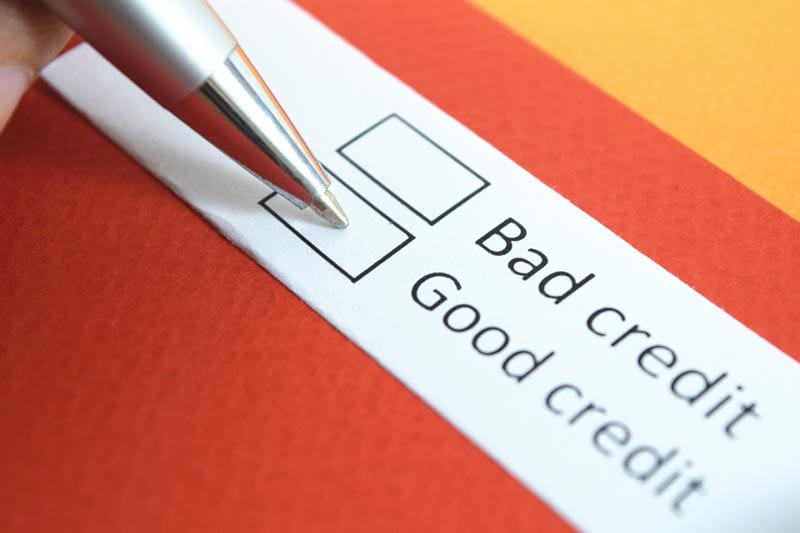Kenny Rogers is a singer, not a debt management adviser, but if you want financial security, take his famous words of poker wisdom: You’ve got to know when to hold ‘em, know when to fold ‘em.
Picture yourself as a poker player surveying a hand of financial cards you’ve just been dealt. The mortgage card would be considered an Ace, or at least a King because traditionally owning a home has real value. Same goes for student loans (maybe that’s a Queen) and even auto loans (probably a Jack) that would be decent cards if played right.
Credit card debt and payday loans would be your junk cards, the ones you’d want to dump the first chance you get.
Ideally, you have no debt and don’t have to play the game. But unlike Rogers, most of us haven’t made $250 million selling records so we’ve got to deal with the good and bad financial hands we’re dealt.
According to a 2015 study by The Pew Charitable Trusts, 47% of households spend as much or more than their income and 8% of households are “debt-challenged,” meaning at least 41% of their gross monthly income goes toward debt repayment.
With numbers like that, you need to separate good debt from bad debt. Good debt is money spent on items that increase in value or lead to financial gain. Bad debt is spent on items that decrease in value, especially when they come with high interest rates.
More specifically, here’s what makes a good debt-poker card:
Taking out a Mortgage
The U.S. Census reports the average price of a house in 2016 rose to $305,400. Not many people can write a check for that amount, so borrowing is the only option.
The good news is the average home price 30 years ago was $95,000. Even with the Great Recession factored in, home prices have increased an average of 6.5% a year over the past 30 years.
History says you’ll eventually turn a profit on a house, so real estate is as much an investment as it is an expense. But the housing bust that triggered the recession made first-time buyers wary of taking the home-owning plunge. The average age of a first-time buyer is 33, and they rented six years before buying a home. In the 1970s, first time buyers were 30 and they rented an average of 2.6 years before buying.
Today’s first-time home buyers also spend more, buying homes that cost 2.6 times their annual income as opposed to 1.7 times annual income in the ‘70s.
Only 40% of first-time buyers were married, down from 60% from 30 years ago. Millennials are putting off playing the debt game much longer than their parents.
Whenever they get dealt in, the mortgage card is a keeper. Not only will the purchased item increase in value, the interest paid is usually tax deductible.
Investing to Increase Future or Current Earnings
Student debt has exploded in recent years, totaling $1.26 trillion in 2016. The average monthly payment for borrowers 20 to 30 years old was $351.
As startling as those numbers are, a college education is still a good investment as long as you get a viable degree. According to the Economic Policy Institute, college graduates earned 56% more than high school grads in 2015. That was the largest such gap since 1973.
Automobile loans in the U.S. also topped $1 trillion for first time in 2016, with an average monthly payment of $503. Unlike houses, cars don’t appreciate (unless you buy a ’65 Mustang or ’56 Chevy). The average new vehicle depreciates 19% in the first year and 30% more in the next two years.
What makes automobile debt a reasonable card to play is it’s a means to an end. A lot of people need a car to get to work and/or just execute the everyday functions of life.
If you can get by without one, do it. If you can’t, just be reasonable and buy solid transportation that allows you to make a living. In other words, don’t buy a $60,000 BMW when an $20,000 Hyundai will do.
Borrowing but Saving Time and Money
Residents in single-family homes spend a median of $226 monthly on utilities. A lot of that is money thrown out the leaky window.
It can cost thousands of dollars to weatherize your home and buy energy-efficient appliances. But they can cut utility consumption drastically and eventually pay for themselves.
Borrowing for Business
Besides being wildly successful, what do Apple, Microsoft, Google, Disney, Harley Davidson have in common? They all started in a garage.
You might not be the next Bill Gates, but business loans generally range from 6% to 9% interest, a reasonable rate if you have a good idea, solid work ethic and luck. This could be money well spent.
Those are the primary Good Debt cards you might acquire.
Then there are the other kind, with the most common being…
Credit Card Debt
Some people pay for life’s necessities (food, clothing, shelter) with credit cards. A lot of people pay for life’s desires (eating out, fancy wardrobe, 60-inch plasma TV) with credit cards.
If the credit cards are paid off monthly, no real harm is done, but only 35% of credit card users carry no balance.
The average American between ages of 18 and 65 had $4,717 in credit card debt in 2015, according to the Federal Reserve. The average interest rate was 15%. With a minimum monthly payment of $189, it would take 10 years to pay off that $4,717 and the total payments would be $22,869.
That, poker fans, is a bad debt.
Payday Loans
You basically get an advance on your paycheck. Sounds so simple that 12 million Americans take out payday loans every year. They also pay $9 billion in loan fees with annual percentage rates ranging from 390% to as much as 780%, according to the Federal Trade Commission.
The average payday loan customer spends $520 in fees to borrow $375.
That, poker fans, is even worse debt.
Bad Part of Good Debt
It is also important to understand that even good debt can have negative aspects when you get too much of it.
If your monthly debt payments exceed 36% of your income, it can negatively affect your credit score and throw your debt-to-income ratio into the red zone. And the better your credit score is, the better interest rate you’ll get on loans.
Whether you seek help or go it alone, debt poker is just like the regular poker except for one thing. You can’t bluff your way to victory in debt poker.
But if you avoid bad debt and act responsibly with good debt, success is in the cards.

5 MINUTE READ
Home » InCharge Blog »
Sources:
- McCarthy, B., Mills, K. (2014 July 22). The State of Small Business Lending: Credit Access during the Recovery and how Technology May Change the Game. Retrieved from http://www.hbs.edu/faculty/Publication%20Files/15-004_09b1bf8b-eb2a-4e63-9c4e-0374f770856f.pdf
- NA, ND. Federal Student Aid. Retrieved from https://studentaid.ed.gov/sa/about/data-center/student/portfolio
- Urah, S., Plunkett, T. (2015, January) The Precarious State of Family Balance Sheets. Retrieved from http://www.pewtrusts.org/~/media/assets/2015/01/fsm_balance_sheet_report.pdf%E2%80%99
- NA (2015, August 20). Zillow: Average First-Time Homebuyer 33 Years of Age. Retrieved from http://nationalmortgageprofessional.com/news/55433/zillow-average-first-time-homebuyer-33-years-age

















